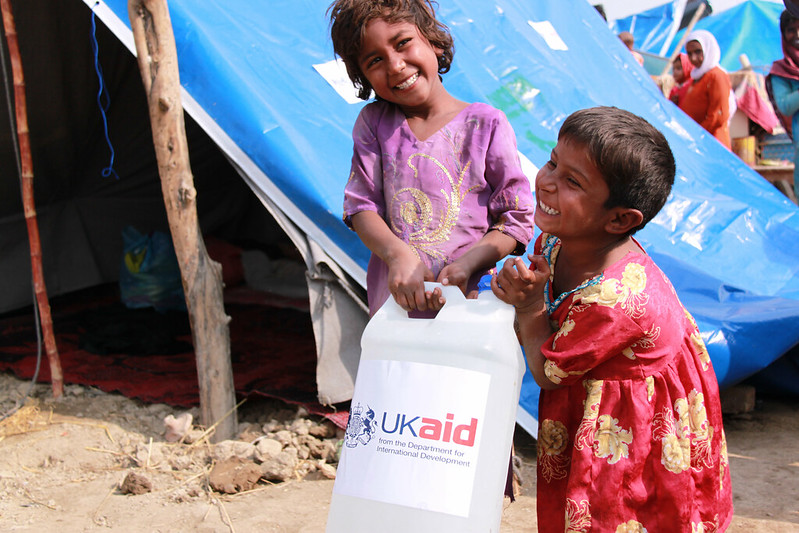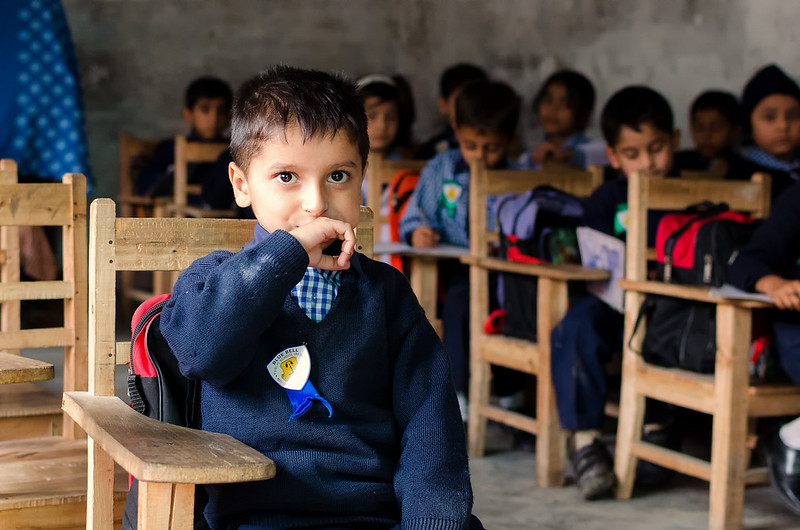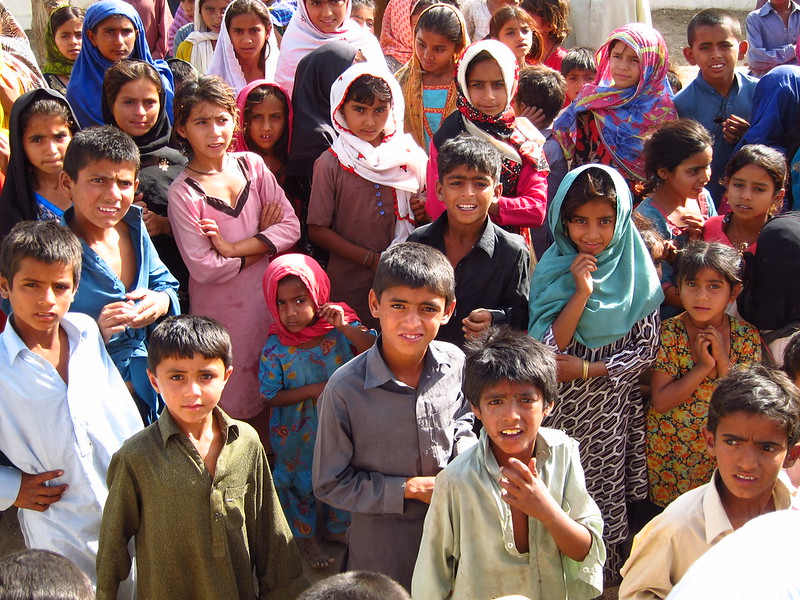 According to the World Bank, Pakistan’s poverty rate is 40.1%, about the same as in 2018. However, when accounting for population growth, approximately 7 million more Pakistanis are living in poverty today. Pakistan has faced several setbacks in combating poverty, such as its slow economic growth in the last six years.
According to the World Bank, Pakistan’s poverty rate is 40.1%, about the same as in 2018. However, when accounting for population growth, approximately 7 million more Pakistanis are living in poverty today. Pakistan has faced several setbacks in combating poverty, such as its slow economic growth in the last six years.
However, there is another facet of Pakistan’s poverty that is equally important to consider. Women are disproportionately represented among the nation’s vulnerable communities, with 75% of Pakistan’s extremely impoverished population being women and girls. This phenomenon, sometimes referred to as the “feminization of poverty,” is critical to consider when attempting to address the country’s poverty rate.
Gender Inequality in Pakistan
Pakistan ranks low on global gender inequality indexes. The nation ranked 145th out of 146 countries on the World Economic Forum’s 2024 Global Gender Gap Index, which examines the current state and evolution of gender equality across four categories: Economic Participation and Opportunity, Educational Attainment, Health and Survival and Political Empowerment. Pakistan’s performance in each domain warrants brief discussion.
- Economic Participation and Opportunity: In 2023, only 24% of women aged 15–64 participated in the workforce, compared with 81% of men in the same age range. Reasons for this gap include lower salaries (the gender wage gap was about 34% in 2022) and discriminatory work environments. Moreover, traditional gender roles discourage women’s participation in the workforce, establishing men as wage earners for their families and expecting women to perform more domestic tasks such as caring for their home and children.
- Educational Attainment: As of 2021, the average number of years of education was 3.9 for women and 6.4 for men across the country — while these numbers varied by region, in all provinces, 10% or fewer of women completed secondary school. As of October 2022, the literacy rate for men in Pakistan was 69.3%, compared with 46.5% for women.
- Health and Survival: About 27% of women in Pakistan experience intimate partner or domestic violence throughout their life, according to a United Nations (U.N.) report in 2023. Furthermore, only 51% of Pakistani women perceived their communities to be safe. While the nation has passed laws and policies against violence, implementing and enforcing them remains a challenge. Many women have little access to services such as police and social support that ensure their safety and protection.
- Political Empowerment: Women’s representation in parliament remains limited. As of 2023, women held only 20.4% of seats in Pakistani national parliaments.
How Does Gender Inequality Affect Poverty in Pakistan?
Pakistan’s adherence to traditional gender roles limits educational, occupational and political opportunities for women. But how does this account for the disproportionate share of women among the country’s poor? According to the U.N., gender disparities in poverty stem from women’s lack of access to economic resources and financial independence. Pakistan’s substantial gender gap in economic participation reveals this disparity. Lower literacy rates and education levels also reinforce these numbers. Education is essential to securing a well-paying job — fewer years of schooling reduce a woman’s economic opportunities and serve as an obstacle to overcoming poverty.
Addressing Gender Inequality in Pakistan
While Pakistan needs to make considerable progress to overcome gender inequality, some organizations are currently working to provide more opportunities for Pakistani women. The U.N. Women Pakistan supports U.N. initiatives to implement global gender equality standards in Pakistan and encourages the Pakistani government to comply with those standards. Recent efforts include creating committees for the Convention on the Elimination of All Forms of Discrimination Against Women and strengthening Pakistan’s Women Development Departments.
The Women’s Parliamentary Caucus also works to influence gender-related legislation in Pakistan. The nonpartisan caucus works with international organizations to strengthen women’s rights and implement policies combating gender inequality in Pakistan. It recently organized a roundtable titled “Gender Responsive Budgeting for Women’s Empowerment in Pakistan,” during which it addressed various gender-related topics, including women’s lack of access to educational and medical facilities in rural areas and the prevalence of gender bias against national and provincial women legislators.
Pakistan’s gender gap in educational and economic participation is substantial. While the U.N. Women Pakistan and the Women’s Parliamentary Caucus are working toward improving educational and financial opportunities for women, much more work remains to reduce gender inequality in Pakistan. Bridging the gender gap will help diminish the feminization of Pakistan’s impoverished population—a major step in addressing the nation’s poverty rate as a whole.
– Lana Swindle
Lana is based in Princeton, NJ, USA and focuses on Global Health and Politics for The Borgen Project.
Photo: Flickr


 Pakistan is an emerging middle power within the East Asia hemisphere quickly on the incline to becoming one of the world’s largest militaries and economic power in the East. However, for all its recent growth, a multitude of issues still plague the nation; terrorism, corruption, religious strife, illiteracy and
Pakistan is an emerging middle power within the East Asia hemisphere quickly on the incline to becoming one of the world’s largest militaries and economic power in the East. However, for all its recent growth, a multitude of issues still plague the nation; terrorism, corruption, religious strife, illiteracy and  Sindh, the southeastern region of Pakistan, hosts up to 600,000 hectares of mangroves and tropical trees that primarily grow in saltwater. Over the past century, the country has lost up to
Sindh, the southeastern region of Pakistan, hosts up to 600,000 hectares of mangroves and tropical trees that primarily grow in saltwater. Over the past century, the country has lost up to 
 In the heart of Pakistan, where rural areas often face a lack of infrastructure and limited access to amenities like electricity, exacerbating poverty, the Aga Khan Rural Support Programme (AKRSP) has become a beacon of hope. Established in 1982,
In the heart of Pakistan, where rural areas often face a lack of infrastructure and limited access to amenities like electricity, exacerbating poverty, the Aga Khan Rural Support Programme (AKRSP) has become a beacon of hope. Established in 1982,  In a 2023 report,
In a 2023 report,  Polio was once a disease that threatened children across the world, its outbreak was a constant cause of worry among communities in every country. However, thanks to successful worldwide immunization,
Polio was once a disease that threatened children across the world, its outbreak was a constant cause of worry among communities in every country. However, thanks to successful worldwide immunization, 
